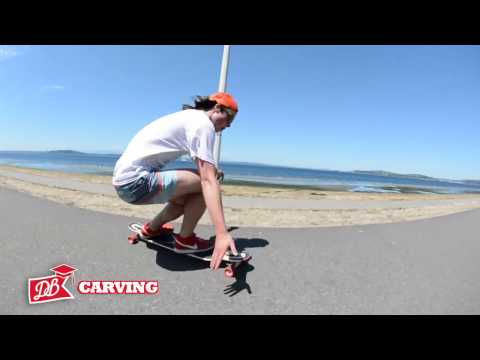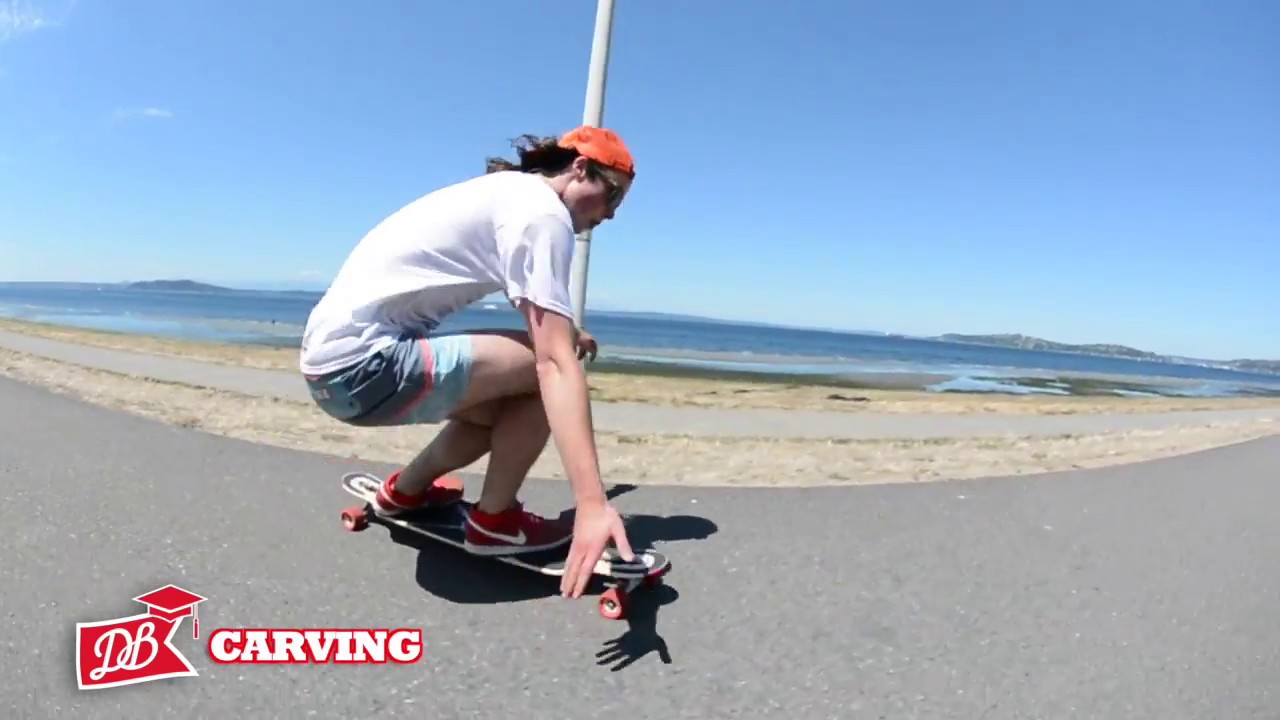Carving is a thrilling and dynamic technique in the exhilarating world of longboarding. It involves the art of skillfully maneuvering the board with smooth and fluid turns, creating a seamless flow of motion that is both visually captivating and physically engaging. Carving allows riders to gracefully glide through winding pathways, conquering tight corners and sweeping bends with finesse and precision. The feeling of effortlessly shifting your weight and leaning into each turn, as the board responds with a satisfying carve, is nothing short of exhilarating. Carving provides a unique sense of freedom and control, as you become one with the board, seamlessly transitioning from one turn to the next. The rhythmic motion and controlled speed of carving not only offer a thrilling experience but also provide an excellent full-body workout, engaging your core muscles and enhancing your balance and coordination. Whether you are a seasoned longboarder or a beginner looking to explore new horizons, carving is a skill that will take your riding to the next level, opening up a world of endless possibilities and adrenaline-fueled adventures. So, grab your board, hit the pavement, and embark on an extraordinary journey of carving that will leave you craving for more.

Carving in Longboarding
| Aspect | Description |
|---|---|
| Definition | Carving in longboarding refers to the technique of making smooth, flowing turns while maintaining control and speed. It involves using the body’s movements and weight distribution to generate momentum and execute precise maneuvers. |
| Board Setup | Carving is best performed on longboards with a flexy deck, larger and softer wheels, and responsive trucks. These elements provide the necessary stability, grip, and responsiveness required for carving at high speeds and on various terrain. |
| Body Positioning | To carve effectively, riders should adopt a low and centered stance. This position allows for greater control and balance while distributing the body’s weight evenly over the board. Proper body positioning also ensures efficient weight transfer during turns, facilitating smooth and fluid movements. |
| Technique | Carving involves initiating turns by leaning into them rather than relying solely on steering. Riders shift their weight towards the heel or toe edge of the board, creating pressure and bending the board to generate a curved trajectory. The motion is akin to surfing or snowboarding, mimicking the sensation of riding a wave or carving through snow. |
| Benefits | Carving is not only aesthetically pleasing but also serves several practical purposes in longboarding. It helps riders maintain speed while maneuvering corners, navigate crowded areas with agility, and improve overall board control and stability. Additionally, carving can provide an exhilarating experience, allowing riders to feel a sense of flow and connection with the road beneath them. |
| Advanced Techniques | Experienced riders can take carving to the next level by incorporating advanced techniques such as slides and drifts. These maneuvers involve deliberately breaking traction with the road surface, allowing the board to skid or slide while maintaining control. Advanced carving techniques require precise weight distribution, refined balance, and mastery over board control. |
“Mastering Longboarding: Unleashing the Art of Pushing and Carving”
What is Carving in Longboarding?
Longboarding is a popular sport that combines elements of skateboarding and surfing. It involves riding on a longboard, which is a longer and wider version of a skateboard. One of the most fundamental techniques in longboarding is carving. Carving refers to the act of making smooth, flowing turns while maintaining control and speed. In this article, we will explore what carving in longboarding is all about and why it is such an integral part of the sport.
The Technique of Carving
Carving in longboarding involves using your body and board to create a smooth, sweeping motion while turning. Unlike skateboarding, where the focus is more on quick and sharp turns, carving emphasizes fluidity and grace. To carve effectively, riders shift their weight and use their body to lean into turns, allowing the board to follow a curved path. This technique allows for a more controlled and enjoyable riding experience.
The Benefits of Carving
Carving offers numerous benefits for longboarders. Firstly, it allows riders to maintain a higher speed while turning. By leaning into the turn, the rider can use centrifugal force to maintain momentum, resulting in a smoother and more efficient ride. Additionally, carving provides a great way to navigate through crowded areas or tight corners, as the wide turns help maintain control and avoid obstacles. Furthermore, carving is an excellent exercise for the entire body, as it engages the core, legs, and arms, providing a full-body workout.
Carving Styles
Carving can be done in various styles, each with its own unique characteristics. One popular style is the classic carve, which involves making wide, flowing turns while maintaining a consistent speed. This style is often chosen by riders who enjoy a relaxed and cruisy experience. Another style is the aggressive carve, which involves sharper and more aggressive turns. This style is more suited for riders who prefer a faster and more dynamic riding experience. Finally, there is the pumping carve, which involves using the body’s movements to generate momentum and maintain speed without pushing. This style is often used in downhill racing or when riding on flat surfaces.
Tips for Carving
Carving may seem simple, but it requires practice and skill to master. Here are some tips to improve your carving technique:
- Choose the right setup: Make sure you have the appropriate longboard setup for carving. Look for a board with a flex that suits your weight and riding style, as well as trucks that allow for smooth and responsive turns.
- Focus on body positioning: Proper body positioning is key to effective carving. Lean into the turns and use your body to guide the board smoothly. Keep your weight centered and distribute it evenly as you transition from one turn to another.
- Practice on different terrain: Carving can feel different depending on the terrain you ride on. Experiment with different surfaces like hills, flat ground, or even skateparks to improve your carving skills in various scenarios.
- Start with wide turns: When starting, it’s best to begin with wide turns to get a feel for the motion. As you become more comfortable, gradually work on tighter and more controlled turns.
- Stay relaxed and have fun: Finally, remember to enjoy the process and have fun while carving. Relax your body, let go of any tension, and allow yourself to flow with the movements. The more relaxed you are, the smoother your carving will be.
In conclusion, carving is an essential technique in longboarding that offers a range of benefits for riders. Whether you are a beginner or an experienced longboarder, mastering the art of carving will undoubtedly enhance your riding experience. So, grab your longboard, hit the streets, and start carving your way to an exhilarating adventure!

